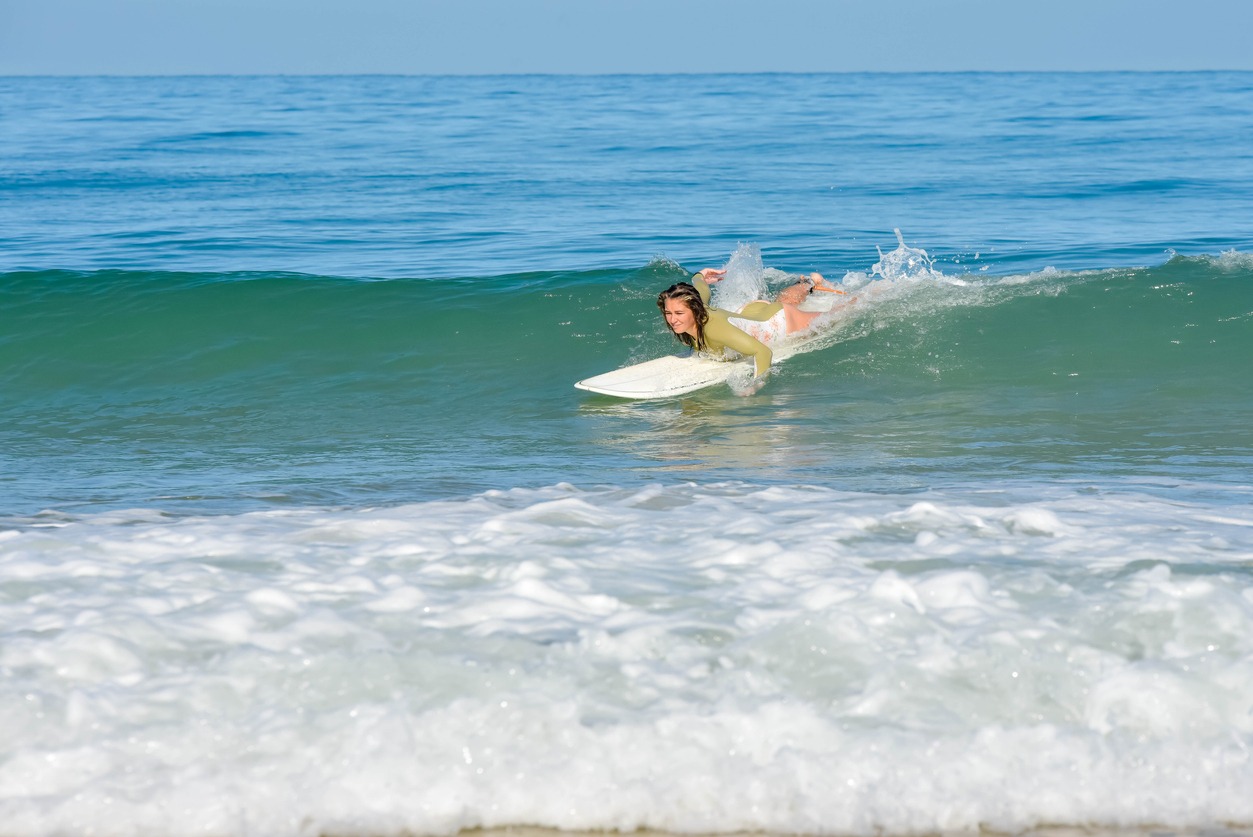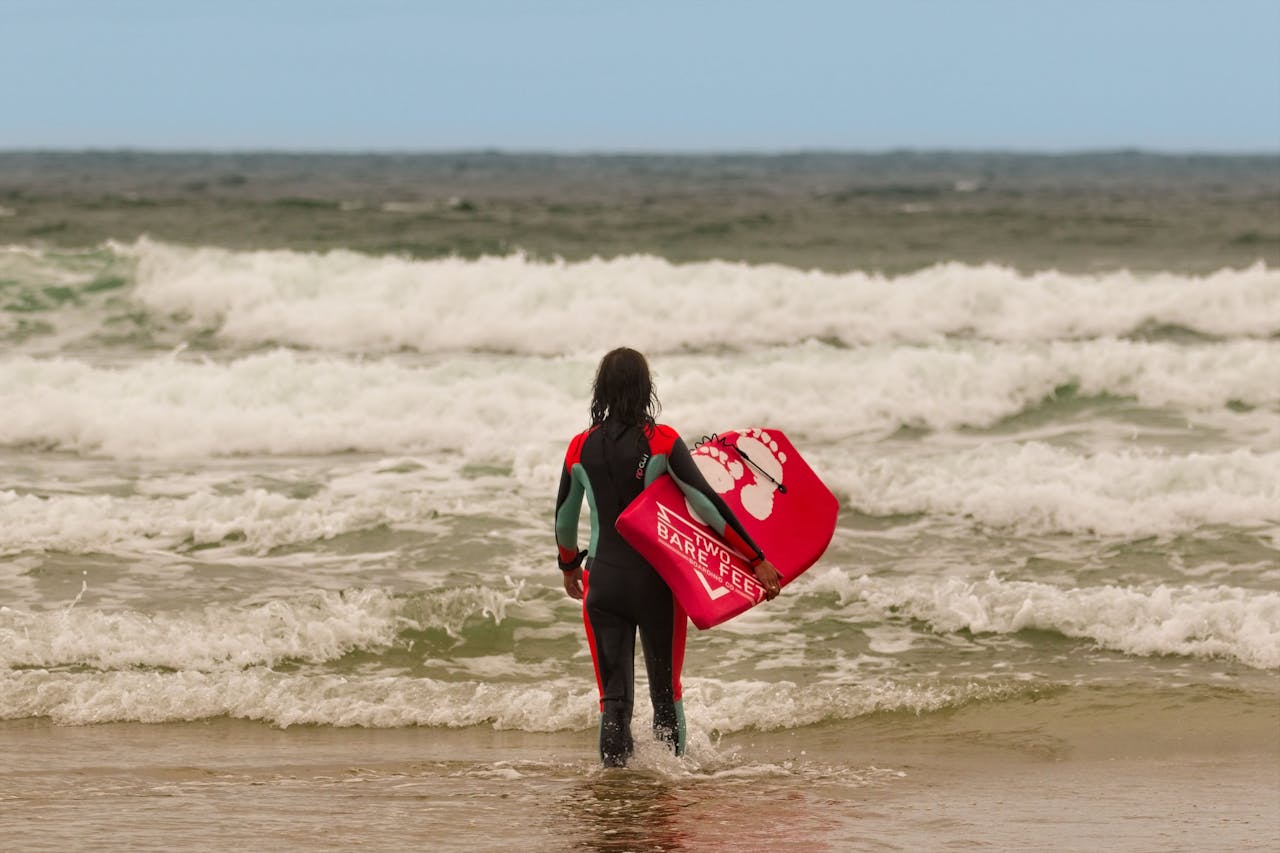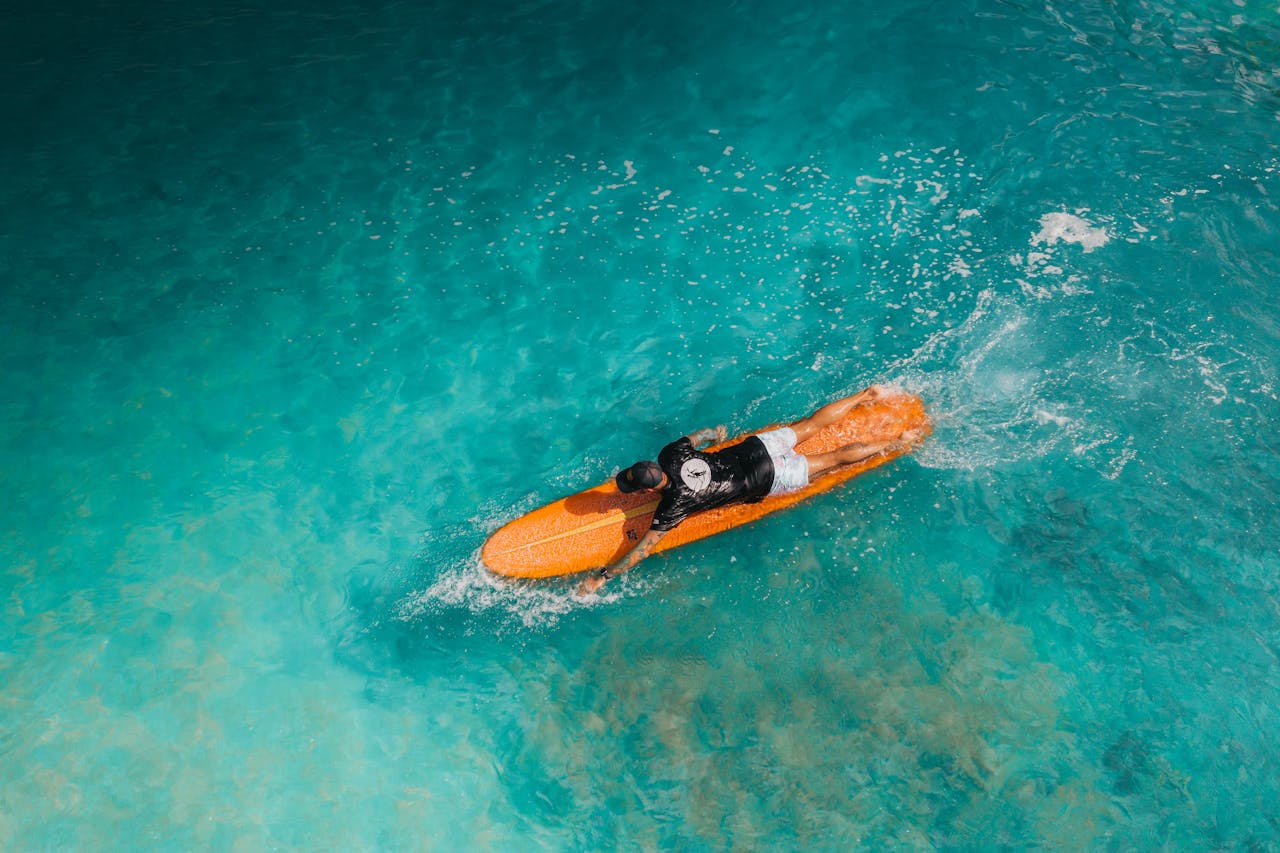The History of Bodyboarding and Boogie Boarding
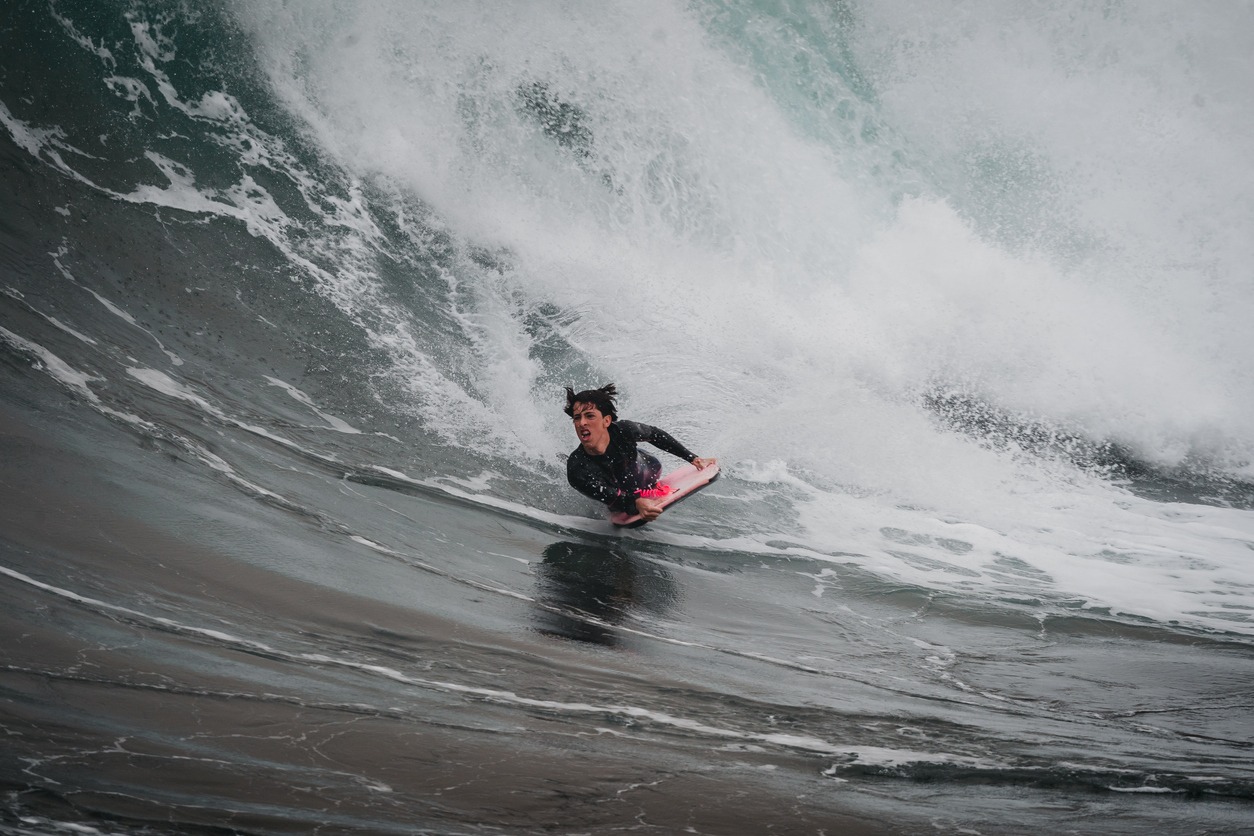
Bodyboarding's roots trace back to ancient Polynesian wave riding practices, but it was Tom Morey's 1971 invention of the Boogie Board that revolutionized the sport. Morey's lightweight, accessible design democratized wave riding, sparking a cultural phenomenon. The sport quickly evolved from recreational fun to competitive prowess, with the establishment of the International Bodyboarding Association in 1982. As the sport spread globally, innovations in board materials and riding techniques pushed its boundaries. From Mike Stewart's world championships to the development of advanced composite materials, bodyboarding has continually evolved. There's more to this thrilling water sport than meets the eye.
Ancient Origins of Wave Riding
From out of the mists of time, wave riding on prone boards emerges as an ancient practice deeply rooted in Polynesian cultures. As you immerse into the history of diving and snorkeling, you'll uncover that early Hawaiians crafted paipo boards from carved wood, using them to harness the power of waves in a prone position. These boards weren't just for recreation; they held significant cultural and ceremonial importance. Ancient divers used techniques like pouring oil and holding a mouthful of air to equalize pressure, which may have influenced the development of these early wave riding practices.
You'll find that paipo boards were often intricately decorated, reflecting the deep connection between Polynesian societies and the ocean. This ancient form of wave riding laid the groundwork for what would eventually become modern bodyboarding. As you explore further, you'll see how these early practitioners became skilled in the art of riding waves without standing up, a technique that would influence water sports for generations to come.
The use of paipo boards in Polynesian cultures dates back hundreds of years, showcasing the enduring appeal of prone wave riding. By understanding these ancient origins, you'll gain a deeper appreciation for the rich history and cultural significance of bodyboarding and its predecessors.
Birth of the Boogie Board
The bodyboarding revolution began in 1971 when surf innovator Tom Morey crafted the first modern bodyboard from polyethylene packing foam. This breakthrough design, which he trademarked as the "Morey Boogie Board," would forever alter the landscape of wave riding and beach culture. The origins and history of bodyboarding trace back to Polynesian culture, where the practice of wave riding while prone on a board has long been a cherished tradition.
Morey's creation measured 45" long, 25" wide, and 2.25" thick, weighing just 3.75 pounds. This compact and lightweight design allowed for a completely new wave-riding experience, accessible to a broader range of enthusiasts. To further promote his invention, Morey employed unique marketing strategies and even offered a do-it-yourself kit for $25, enabling consumers to assemble their own bodyboards.
The Morey Boogie Board's innovative design and accessibility quickly caught on, sparking a cultural phenomenon in American beach culture. You could now experience the thrill of riding waves without the steep learning curve associated with traditional surfing. This democratization of wave riding opened up new possibilities for beachgoers, reshaping how people interacted with the ocean. The birth of the Morey Boogie Board marks a pivotal moment in the history of water sports, setting the stage for the widespread popularity and participation levels of bodyboarding we see today.
Tom Morey's Innovative Design
While surf innovators had long sought ways to make wave riding more accessible, Tom Morey's pioneering design in 1971 truly revolutionized the sport. He transformed a six-foot epoxy glass concept into a nine-foot foam board, which he named the "Morey Boogie." This innovative design democratized wave riding, making it possible for riders of all skill levels to enjoy the rhythmic dance of board and wave.
Morey's use of novel materials, particularly closed-cell polyethylene packing foam, was a pivotal development. The Boogie board's unique construction allowed for easier maneuverability and greater buoyancy, opening up wave riding to a broader audience. As a result, it quickly became a cultural phenomenon in American beach culture.
Morey's passion for innovation didn't stop there. In 1982, he shaped the Mach 7 model, featuring a thicker yellow deck skin that enabled easier paddling and earlier take-offs. This continuous drive to improve and push boundaries has cemented the Morey Bodyboard's legacy as a transformative invention that forever changed the sport of wave riding.
Commercialization and Mass Production
Tom Morey's innovative design quickly caught the attention of the surfing industry, leading to a vital deal with Larry Smith of G&S Surfboards in 1971. This partnership marked the beginning of the boogie board's commercialization, setting the stage for mass production and widespread popularity.
Morey trademarked the name "Morey Boogie" and began promoting his new prone riding board in surf magazines. He priced the original boogie board at $37, cleverly matching his age at the time. This strategic pricing, combined with the board's accessibility, helped it gain traction among both experienced surfers and newcomers to wave riding.
Unlike traditional surfboards made from materials like epoxy glass or carbon fibre, Boogie boards could be made cheaply and easily. This affordability contributed to their rapid adoption and sales success. Morey's decision to allow the use of boogie boards during the blackball season, when traditional surfing was prohibited, further increased their popularity.
The boogie board concept quickly took off, selling hundreds of thousands of units and creating a new wave-riding movement. This mass production and widespread adoption revolutionized the surfing industry, making wave riding accessible to a broader audience and establishing bodyboarding as a distinct water sport.
Rise of Competitive Bodyboarding
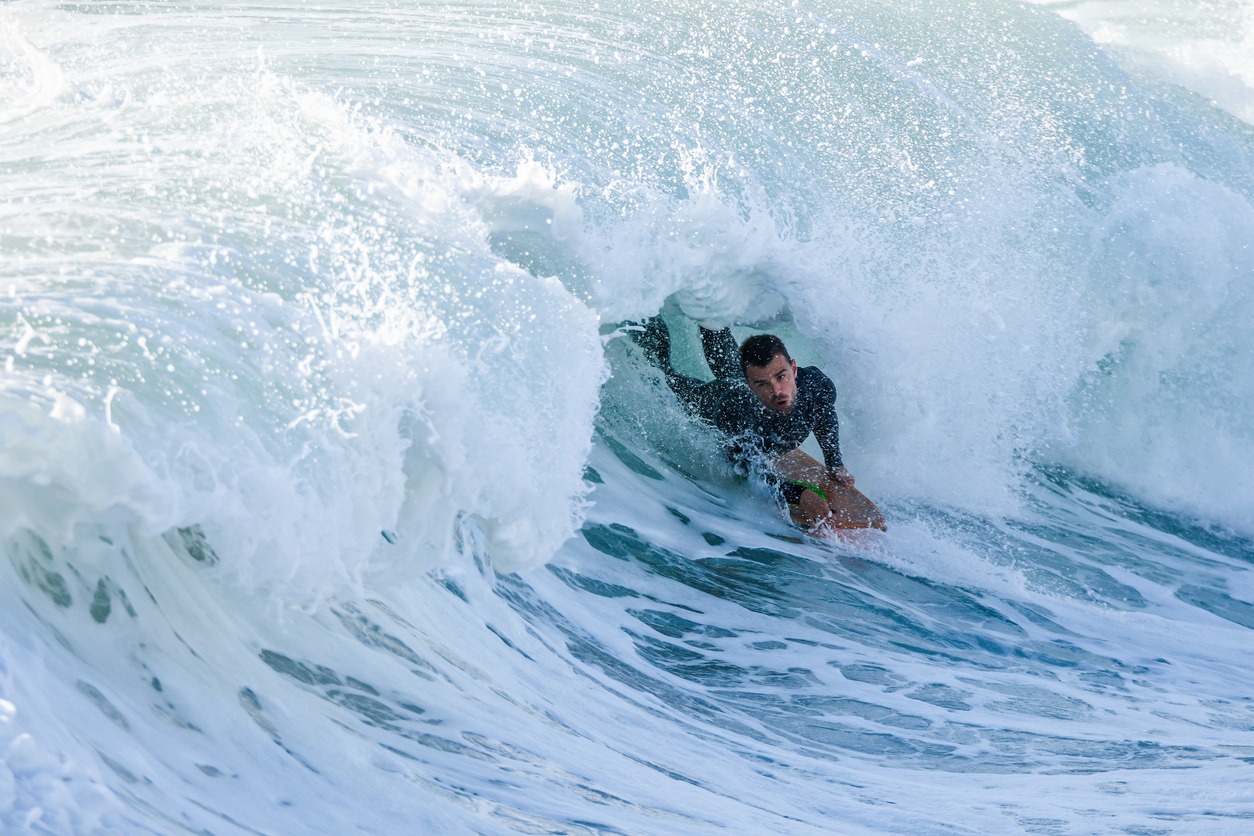
Competitive bodyboarding burst onto the scene in the late 1970s, marking a fresh chapter for the sport. The 1977 Laguna Beach Boogie Board contest, organized by Patti Serrano, made waves as the first major event of its kind. This contest set the stage for the evolution of bodyboarding from a casual beach activity to a serious competitive pursuit.
As you entered the 1980s, you'd witness the sport's rapid professionalization. The establishment of the International Bodyboarding Association (IBA) in 1982 paved the way for structured competitions and the first world championship event. Bodyboarding contests became more frequent and organized, attracting skilled riders enthusiastic to showcase their talents.
Pioneers like Mike Stewart and Guilherme Tamega dominated the competitive scene, winning multiple world titles and pushing the boundaries of what was possible on this surf craft. The launch of the IBA World Tour in 1991 further legitimized the sport, bringing increased exposure and sponsorship opportunities to top competitors.
Advancements in equipment design, such as the Mach 7 bodyboard in 1982, allowed riders to perform more advanced maneuvers while catching waves. These innovations fueled the sport's progression and amplified the level of competition.
Evolution of Board Materials
Nearly every aspect of bodyboarding has evolved since its inception, but perhaps none more dramatically than the materials used in board construction. When Tom Morey's first prototype hit the waves, it was a simple, flat foam board made for gliding across the water's surface. You'd have felt the wave through the board, experiencing every ripple and bump.
As the sport gained popularity, innovations quickly followed. Fins were added to improve your control and propulsion, allowing you to catch more waves and perform tricks. The introduction of concave bottom designs revolutionized how you'd ride, enhancing speed and maneuverability.
Today's boards are a far cry from those early models. High-tech materials like carbon fiber and Surlyn have replaced basic foam, creating boards that are lighter, stronger, and more responsive. You'll find specialized designs for different wave conditions and riding styles. The shift to advanced composite materials has enabled manufacturers to fine-tune every aspect of a board's performance, from flex patterns to durability. Whether you're a beginner or a pro, you'll benefit from decades of continuous innovation in bodyboard construction.
Influential Riders and Pioneers
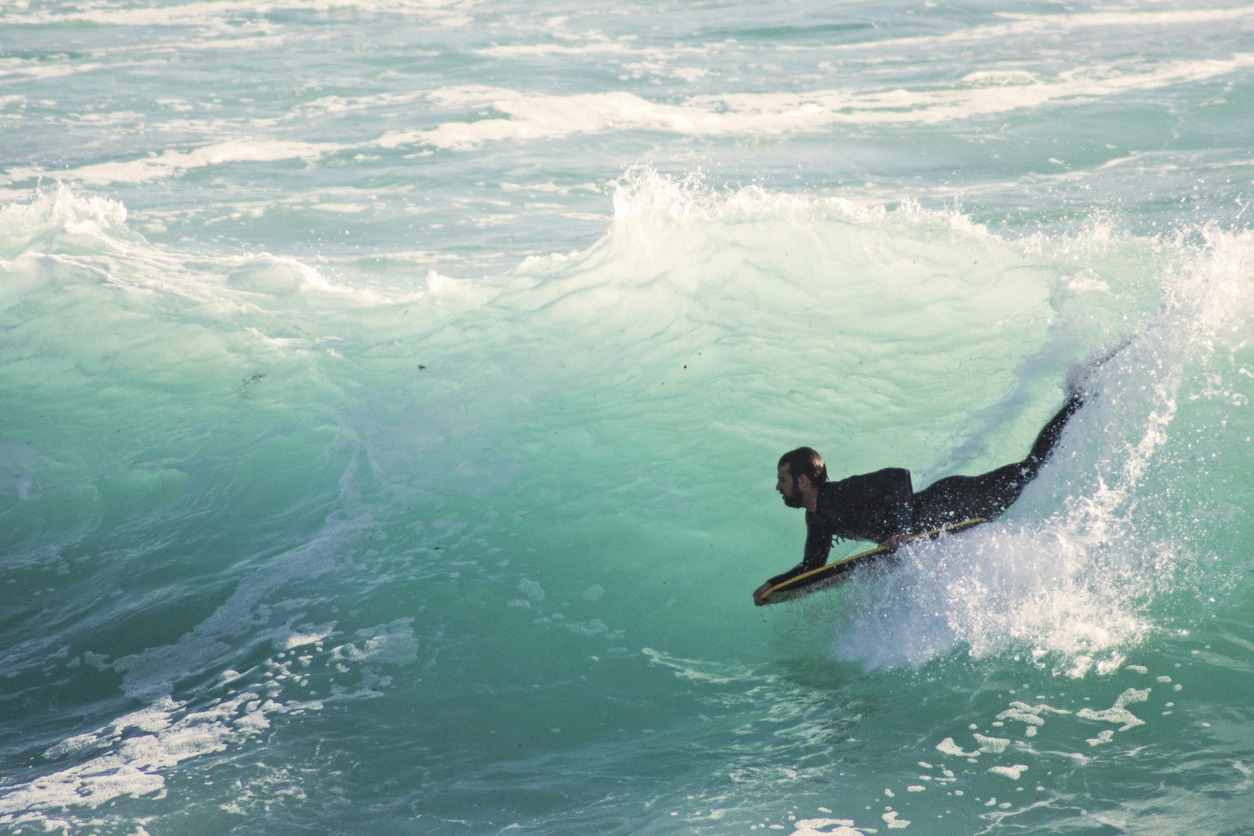
Bodyboarding's evolution owes much to the daring innovators who pushed the sport's boundaries. You'll find that pioneers like Tom Morey laid the foundation for modern bodyboarding. In 1971, Morey created the first prototype using polyethylene foam, which later became the iconic "Morey Boogie" board. His partnership with Jim Faivre, an expert carpenter, led to the development of mass production techniques that revolutionized the industry.
Riders who took the sport to new heights include:
- Mike Stewart, a nine-time world champion who augmented bodyboarding's status in the surf world
- Phyllis Dameron, a fearless free surfer known for tackling big waves on customized boards
- Patti Serrano, who organized local contests and promoted the sport nationwide
These influential figures shaped bodyboarding's course, each contributing uniquely to its growth. Stewart's competitive success showcased the sport's potential, while Dameron's daring rides in Waimea Bay and Sunset Beach proved that bodyboarding could handle extreme conditions. Serrano's efforts in organizing events and promoting the sport helped build a thriving community. The Honolulu Advertiser once reported on a rider who surfed with one leg, demonstrating the sport's inclusivity and adaptability.
Global Spread of the Sport
While pioneers and influential riders shaped bodyboarding's early days, the sport's global appeal soon catapulted it onto the world stage. From its Hawaiian and Californian roots, bodyboarding quickly spread to countries with ideal surf conditions like Australia, South Africa, Brazil, and Portugal. You'd find dedicated communities popping up across continents, as riders explored they could actually feel the wave in a unique way.
The sport's accessibility and versatility fueled its rapid expansion. Surf shops worldwide began stocking bodyboards, making them readily available to enthusiasts. As the sport grew, international competitions emerged, with the Association of Professional Bodyboarders (APB) establishing a world tour in 1982. This global circuit brought together riders from diverse backgrounds, all glued together by their passion for the sport.
Innovations in board design and materials allowed riders to elevate the boundaries of performance, driving bodyboarding's popularity even further. The rise of international travel and the exchange of surf culture catalyzed the sport's diffusion, with communities around the world embracing bodyboarding as their own. This global spread transformed a local pastime into a worldwide phenomenon.
Modern Techniques and Innovations
From its early days of simple wave riding, bodyboarding has evolved into a sport of complex maneuvers and state-of-the-art technology. Years later, the sport has seen significant advancements in techniques and equipment, driven by both national and international competitions.
Modern bodyboarders have refined their finning techniques, drawing inspiration from professional swimmers. You'll find that efficient fin movement is essential for success, with riders adopting straight-leg motions rather than bicycle-like kicks. This technique, combined with larger fin blades, allows for greater thrust and less fatigue during extended sessions.
Innovations in bodyboarding include:
- The development of the helicopter turn, a maneuver that utilizes lower leg and ankle movements for precise rotations
- The introduction of resistive respiratory muscle training to improve endurance and performance
- The use of stationary-swimming ergometers to measure and enhance fin-kick thrust force
These advancements have transformed bodyboarding from a casual beach activity into a professional sport. Whether you're riding waves on the Big Island or competing in international events, modern techniques and innovations have elevated the sport to new heights, rivaling the complexity and skill of professional jazz in its improvisational nature.


